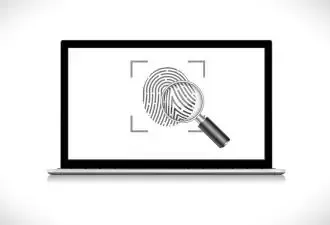What Is a Digital Browser Fingerprint?


In today’s fast-paced internet era, Digital Browser Fingerprints have become a hot topic in the fields of cybersecurity and privacy protection. Many users notice that even if they disable cookies or use incognito mode, websites can still “recognize” them.
The core technology behind this phenomenon is browser fingerprinting.
This article provides a comprehensive overview of digital browser fingerprints, covering their concept, how they work, typical use cases, and potential risks—helping users better understand and manage this technology.

一、What Is a Digital Browser Fingerprint?
A Digital Browser Fingerprint, also known as Browser Fingerprinting, refers to a unique identifier generated by websites through collecting various parameters from a user’s browser and device. This identifier allows websites to track and recognize users effectively.
Unlike traditional cookie-based tracking:
Browser fingerprints do not require any files to be stored on the user’s device;
They are based on the hardware and software environment of the user;
Even if users clear their cache or use private browsing, websites can still potentially identify the same visitor.
二、How Is a Browser Fingerprint Generated?
Browser fingerprints are mainly created by combining the following categories of information:
1.Fonts & Plugins
Installed browser extensions and plugins
Locally installed fonts
Whether Java, Flash, or similar technologies are enabled
2.Operating System & Device Information
System version
Device model and screen resolution
OS type (Windows, macOS, Linux, Android, iOS, etc.)
3.Browser Information
Browser version
User-Agent string
Browser type (Chrome, Firefox, Safari, etc.)
4.Network Information
IP address
Time zone
Language preferences
The combination of these factors often generates a nearly unique digital fingerprint ID.
三、Risks of Digital Browser Fingerprints
While browser fingerprinting is valuable for security and risk management, it also poses privacy concerns:
1.Cross-Site Tracking
Even with cookies disabled, fingerprints can still identify users and link their activity across different websites.
2.Privacy Leakage
Device environment information may be collected by third-party advertisers for targeted marketing, infringing on user privacy.
3.Bypassing Anonymity Tools
Even when using VPNs or proxies, browser fingerprints may still reveal user identity, reducing anonymity.
四、How to Protect Against Browser Fingerprints?
To mitigate the risks associated with digital browser fingerprints, users and organizations can take the following steps:
1.Use Anti-Detect Browsers
Professional tools such as MostLogin, BitBrowser, and GoLogin can virtualize your browser environment and generate fake fingerprints to reduce the risk of tracking.
2.Regularly Change Devices and Environments
In high-security scenarios, using virtual machines, cloud browsers, or proxies can help alter fingerprint characteristics.
3.Minimize Installed Plugins and Fonts
Plugins and fonts are major components of fingerprints. Keeping your browser environment simple helps reduce uniqueness.
五、Applications of Digital Browser Fingerprints
1.Account Security & Risk Control
For social media marketing, multi-account management, and e-commerce, logging into the same account from different countries in a short time can trigger strict platform security checks.
2.Advertising
Advertisers can use browser fingerprints to track user behavior across websites and deliver targeted ads.
3.Anti-Cheating & Multi-Account Prevention
Games and voting systems often use fingerprints to detect whether the same user is operating multiple accounts in a short period.
六、Frequently Asked Questions
1.What is the difference between browser fingerprint and device fingerprint?
Yes. Browser fingerprints mainly rely on browser parameters, while device fingerprints also incorporate hardware information, such as the MAC address.
2.Can a VPN hide my browser fingerprint?
No. A VPN only hides your IP address; it cannot change your browser fingerprint.
3. Can disabling cookies prevent fingerprint tracking?
No. Browser fingerprints are based on the device environment and do not rely on cookies.
七、Conclusion
Digital browser fingerprints are a powerful identification technology widely applied in advertising, risk management, and data analytics.
While they significantly enhance online security, they also pose privacy challenges.
To protect your privacy, it is recommended to use anti-detect browsers and fingerprint obfuscation tools to prevent websites from tracking and identifying you.
🚀 Best Anti-Detection Browser-MostLogin
MostLogin helps users tackle multi-account management, environment isolation, and account risk control.
For any questions, please refer to Official help documentation


